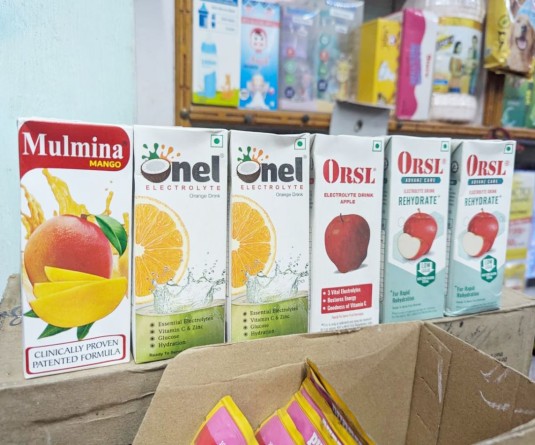
• In 2015-16, Nagaland received highest, 92.5%, financial support
• Could spend only 7.5% of total expenditure from own pocket
• Delhi highest revenue earner, spent only 7.2% money from centre
Morung Express News
Dimapur | April 10
Nagaland received the highest financial support from the centre in 2015-2016, receiving the “neediest State” tag from amongst the 29 states and 7 union territories which encompass the Indian Union.
According to a Reserve Bank of India (RBI) publication, Nagaland State received 92.5% of its financial resources from the centre in 2015-16. This means the Government of Nagaland invested only 7.5% of its total expenditure from its own pocket.
Other needy states, which figure as fully dependent on the centre for money, include Mizoram with 91.9% dependence followed by Arunachal Pradesh at 91.4%, Manipur at 89.7% and Tripura at 87.0%.
At the other end of the spectrum, Delhi, which generates more than 90% of its own revenue, took the least financial support from the central government among all states. It received just 7.2% of its spending money from the union government.
Among the more self-reliant states are Haryana whose share of central taxes and grants is just 23.3%, Maharashtra (23.7%), Tamil Nadu (26.3%) and Telangana (26.8%). While the northeastern states and Jammu & Kashmir are the most dependent on central assistance, Bihar, among the major states, too leans on the centre’s shoulder.
Nagaland, one of the 11 Special Category states in India, relies heavily on the centre for assistance, apparently because of inherent features like a low resource base; low population density or sizable share of tribal population, economic and infrastructural backwardness, and cannot mobilize resources for development.
The revenue from the centre includes States’ share of Taxes and Duties, Non-Plan Grants & Loans, Central Assistance for State & UT plans and Assistance for Central and Centrally Sponsored Schemes.
According to the Comptroller and Auditor General of India report for the year ended March 2016, the total receipt of financial support from the Government of India by Nagaland during 2015-16 was Rs 7,360.08 crore which is Rs 2,540.72 crore as State’s share of net proceeds of divisible Union taxes and Rs 4,819.36 crore as Grants-in-aid.
On the other hand, the revenue raised by the State Government during the fiscal year was Rs 683.49 crore, which consist of Rs 427.10 crore as tax revenue and Rs 256.39 as non-tax revenue.
A more or less stagnant State’s revenue
Showing a receding revenue trend, the growth of revenue during 2015-16 over previous year was at 3.68% against the 19.86 % in the year 2014-15, the CAG report revealed. In addition, during the year 2015-16, the revenue raised by the State Government (Rs 683.49 crore) was eight per cent of the total revenue receipts against the nine per cent in the preceding year.
Nagaland’s ability to raise resources internally has been more or less stagnant for decades with a weak economy and the State highly reliant on Tax revenue as a main source of income. The CAG report 2016 revealed that the State Government earned Rs 427.10 crore from tax revenue, while also indicating an increase of 10% as compared to the Rs 388.60 crore earned during 2014-15.
The major bulk of this revenue was raised solely from sales tax/VAT with Rs 328.58 crore recorded during the fiscal 2015-16. On the Non-tax revenue, Power department stood at highest with Rs 111.10 earnings from the total earning of Rs 256.30 crore under the category.
Further, within the State’s revenues, the share of non-tax revenue had decreased to 05% in 2015-16 (Rs 256.30 crore) over 2014-15 (Rs 270.61 crore). Non-tax revenue includes profit and dividend on government equity, and charges collected for rendering government services like housing, power, medical & public health, public works, police, crop husbandry, forest and wildlife, co-operation etc.
The State revenue could be more, as implied in the CAG report, if it was not plagued by factors like acute lack of transparency, evasion of tax, misappropriation of funds, absence of monitoring and internal control mechanism and lack of public spending efficiency with no budgetary management and control.
One instance can be the miniscule revenue generated by Nagaland state lotteries. According to the CAG report, out of the total sales of Rs 17,653.76 crore made during 2010-16, the distributor deposited only Rs 56.93 crore being Minimum Guaranteed Revenue (MGR) to the Consolidated Fund of the state.
The report stated that the distributor neither deposited the balance amount of Rs 17,596.83 crore to the Consolidated Fund of the state nor was it demanded by the State Government.
Prof Mithilesh Kumar Sinha, Finance Officer NU, Lumami in an analytical study of the ‘sluggish revenue trend in Nagaland’ published recently pointed out on the trends in revenue receipts for the period from 2004-05 to 2014-15 where State’s own revenues as a share of total revenue “have remained almost stagnant and flat.”
The revenue was 8.24 per cent in 2004-05 that witnessed a slight increase to 8.62 per cent in 2014-15. This indicates a perceptible stagnation in the State’s ability to raise resources internally.
A stagnant trend in State’s own tax revenues and declining trend in non-tax revenues indicate a drying up of taxes or a narrowing tax base, a contraction of charged government services or a non-recovery of the economic cost of services. This is indicative of systemic weaknesses and a substandard resource mobilization within the State, Sinha pointed out.
Economic self-sufficiency, which is critical for a state’s development and growth, may be a distant goal judging by the social and political climate in Nagaland State, but an economy dependent on grants will lack incentive to create its own growth mechanisms.




